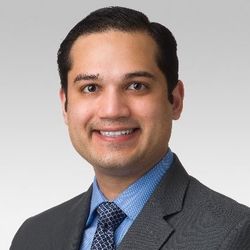
OR WAIT null SECS
Improving Screening Strategies for Cardiac Sarcoidosis
New research has suggested that approximately 2%-5% of patients with sarcoidosis also struggle with cardiac sarcoidosis.
In recent years, the acknowledgement of cardiac involvement in patients with sarcoidosis has become increasingly important. Thanks to advanced screening techniques, new research has suggested that approximately 2%-5% of patients with sarcoidosis also struggle with cardiac sarcoidosis.
However, the practice of adding echocardiography and ambulatory ECG to standard screening with the intention of identifying cardiac sarcoidosis has been deemed controversial by some researchers.
Additionally, previous analyses of various screening approaches have been limited by small patient numbers, selection bias, and inconsistent use of echocardiographic parameters such as global longitudinal strain.
“Advanced screening techniques suggests that around a quarter of people with sarcoidosis could have evidence of cardiac sarcoidosis, and so you can see right away that there's a discrepancy between what you can find with an advanced imaging technique,” said Dan Culver, DO, Chair of the Department of Pulmonary Medicine at the Cleveland Clinic and member of Foundation for Sarcoidosis Research’s Clinical Studies Network. “This raises the question of how much should you look, when do you look and in whom should you look to try to find cardiac sarcoidosis? And this gets us to the original question of how you screen for cardiac sarcoidosis.”
In this episode of DocTalk, Culver spoke on how patients develop cardiac sarcoidosis and why periodic screening could prove beneficial for patients with sarcoidosis.
He also touched on preliminary data of a recent interim analysis regarding the addition of baseline echocardiography and ambulatory ECG in routine screening in patients without obvious cardiac sarcoidosis.
Among the 228 unselected patients who participated in the screening trial, the prevalence of echocardiographic or ambulatory ECG findings suggestive of cardiac sarcoidosis was low, as were the number of additional patients ultimately diagnosed with CS based on screening with these modalities.
Culver noted that the tests conducted in the interim analysis will be repeated in the 2-year follow-up period for patients in the enhanced screening arm to see if more patients will be identified.
“Longer studies really asks the question of whether or not screening should be done on a periodic basis, rather than only at baseline,” Culver said. “It also gives us the chance to see how many patients develop cardiac sarcoidosis overtly, over a 24-month period, in a group of patients that are being followed closely in these experts centers.”
Culver thanked the Foundation for Sarcoidosis Research for providing funding “for a study that otherwise wouldn't be funded, and yet is very, very important to patients”.
To hear more from Dr. Culver, listen to the latest episode of DocTalk above.
Related Content:



